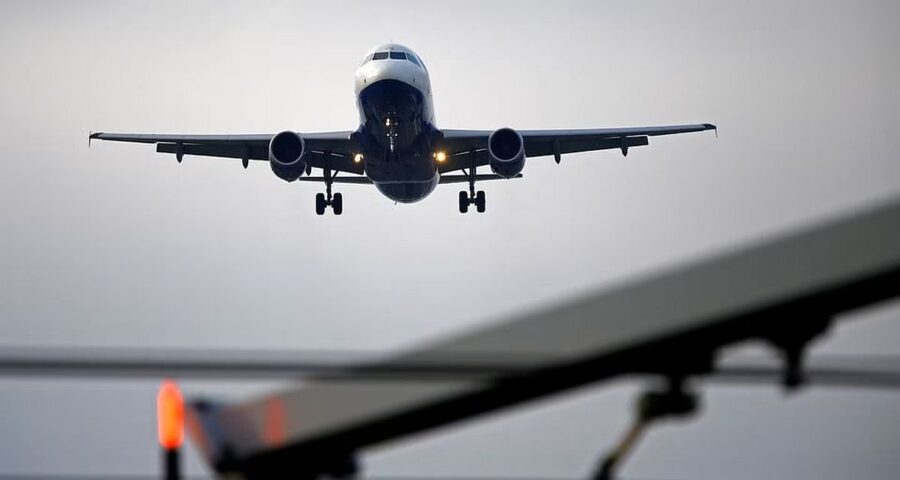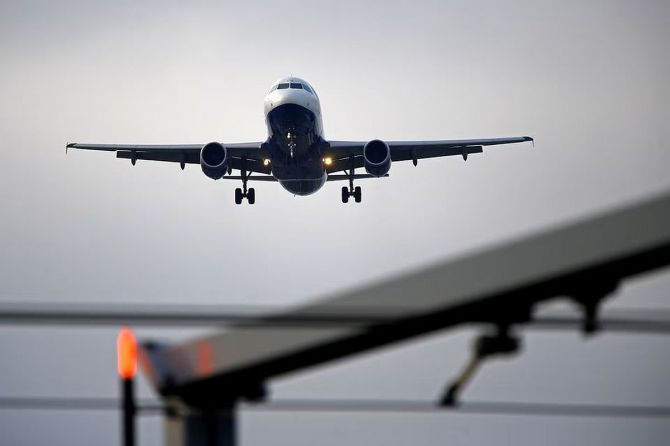A combination of recovery in passenger volumes and easing cost pressures due to stable fuel and foreign exchange costs could spark a turnaround.
Devangshu Datta reports.
India’s aviation industry could return to profitability in 2023-24 for the first time since the pandemic.
The industry may pare aggregated net loss by 75-80 per cent year-on-year (YoY) to between Rs 3,500 crore and Rs 4,500 crore in 2022-23 (FY23), compared with Rs 17,500 crore of net losses in 2021-22 (FY22).
A combination of recovery in passenger volumes and easing cost pressures due to stable fuel and foreign exchange (forex) costs could spark a turnaround.
CRISIL says domestic and international passenger traffic recovered to 90 per cent and 98 per cent, respectively, of pre-pandemic traffic (2019-20, or FY20), in April-December 2022, compared with April-December 2019.
The momentum could be maintained if the Indian economy remains resilient.
Apart from lower fuel costs, the removal of fare caps is also helping.
Debt reduction owing to the privatisation of Air India and expected equity infusions would reduce the reliance on debt (excluding lease liabilities).
Next financial year, CRISIL projects passenger traffic to cross pre-pandemic levels and pricing to be higher by 20-25 per cent over FY20.
Hence, civil aviation could register 25-30 per cent revenue growth next financial year, compared with the pre-pandemic period.
The aviation sector is likely to raise equity of Rs 8,000-10,000 crore over the next two financial years, towards increasing fleet size.
Excluding lease liabilities, aggregated debt dropped from Rs 47,214 crore in 2020-21 to about Rs 18,800 crore in FY22.
But key risks remain.
If equity infusion does not happen, and there is a new debt contracted for capital expenditure on fleet expansion or a resurgence of Covid cases (or some new epidemic), the expectation could break down.
Competitive intensity will rise with Air India booking 470 wide-body and narrow-body planes from Airbus and Boeing.
Air India also has the option to buy additional 370 planes. Industry watchers believe Akasa Air will also place new orders, in addition to the 72 aircraft it already has on order.
IndiGo’s market share stood at 54.6 per cent in January 2023, while Tata Group’s market share stood at 25.4 per cent.
Among listed players, IndiGo (InterGlobe Aviation) is likely to benefit from strong demand and relatively cheaper crude oil.
IndiGo’s ability to maintain market share will be crucial, given the likely competition from the Tatas.
There is a possibility that the market will turn into a duopoly.
The IndiGo stock has corrected over 10 per cent after the third quarter (Q3) of FY23 results, notwithstanding strong results due to expectations of divestment of shares in block deals by the Rakesh Gangwal family.
The Gangwal family sold 4 per cent (15.6 million shares) of its prior 33.8 per cent stake (as of December 31, 2022) for $353 million on February 16, 2023, at an average price of Rs 1,887 per share.
Their stake is now 29.8 per cent.
IndiGo’s Q3FY23 earnings before interest, tax, depreciation, and amortisation (Ebitda) at Rs 3,400 crore and profit after tax (excluding forex losses) at about Rs 2,000 crore were ahead of Street expectations.
SpiceJet also turned operationally profitable with Q3FY23 Ebitda of Rs 590 crore (excluding lease rentals) and it has a high passenger load factor.
But the balance sheet is weak and analysts have complained about non-transparency.
Analysts have a ‘buy’ call on IndiGo (now Rs 1,842.5) with Rs 2,316 as a target (upside of over 25 per cent).
Source: Read Full Article


